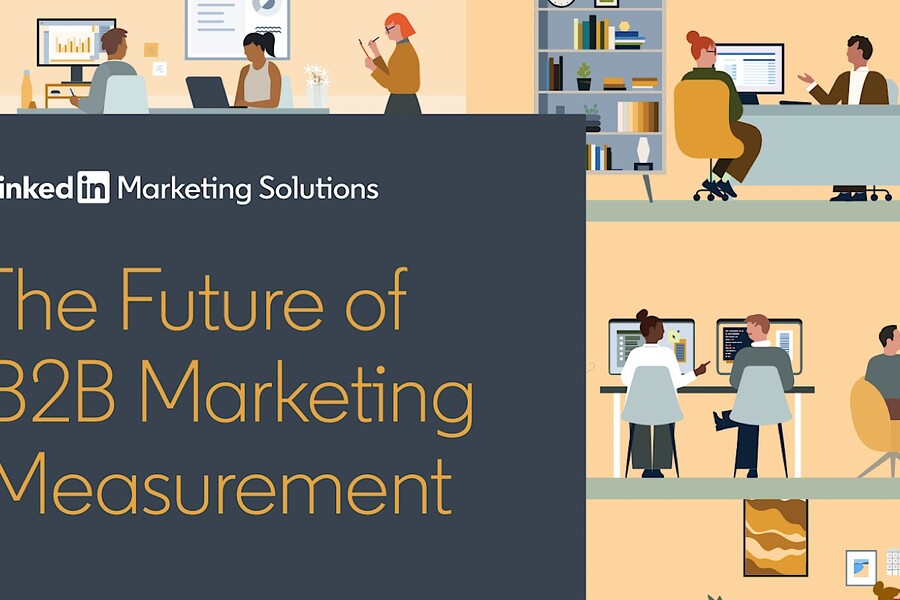LinkedIn Report Highlights Key Trends Shaping the Future of B2B Marketing Success

LinkedIn’s latest report has shed light on critical changes in how B2B marketers measure success, emphasizing a decisive shift towards metrics that prioritize revenue and long-term growth. The findings, based on insights from marketing leaders at companies like Microsoft, PwC, and ServiceNow, highlight five key trends shaping the future of marketing strategies and analytics.
The report underscores a reality that many marketers have faced: traditional metrics, like cost-per-lead and Marketing Qualified Leads (MQLs), are no longer sufficient to demonstrate the impact of marketing efforts. Companies are now moving toward metrics that directly correlate with business outcomes, such as sourced pipeline and influenced pipeline deals. These metrics provide a clearer link between marketing actions and sales results.
ServiceNow’s Vivek Khandelwal explained the importance of revenue-centric measures, stating, “It’s all about how many customers we’re winning, the opportunities we’re creating, and the ROI on marketing investments.” Similarly, Alex Venus from Personio emphasized the focus on the qualified pipeline, noting that opportunities should convert at a rate of at least 25% to be considered effective indicators of marketing success.
The report also reveals increasing pressure on marketers to prove the value of brand-building efforts. With CFOs demanding clear evidence of how awareness campaigns drive revenue, marketers are adopting frameworks that measure engagement alongside pipeline influence. By separating brand and demand-generation budgets, marketing teams can optimize their strategies to balance both short-term and long-term goals.
One of the most significant developments highlighted in the report is the adoption of AI-powered attribution models. As B2B buying cycles become more complex, involving multiple decision-makers, traditional last-touch attribution methods are becoming obsolete. Companies like Cegid are using machine learning to map buyer journeys across numerous touchpoints, enabling them to identify which marketing efforts have the greatest impact.
Julien Harazi, Head of Lead Generation at Cegid, noted, “It can be difficult to understand the buyer journey and identify where the value comes from in terms of your marketing.” Advanced solutions, such as lifetime value (LTV) analysis and media mix modeling, are helping organizations gain deeper insights into customer behavior. Additionally, tools like LinkedIn Sales Navigator are providing account-level data that supports more targeted marketing strategies.
To ensure they strike the right balance between immediate and long-term goals, marketing leaders are adopting a multi-timeframe measurement approach. This involves tracking performance across three distinct periods: real-time optimizations for cost-per-qualified lead, mid-term assessments of pipeline return on ad spend (ROAS), and long-term evaluations of LTV and brand ROI. This strategy prevents teams from overemphasizing short-term gains at the expense of sustainable growth.
Xero’s Global Data & Analytics Lead, Sveta Freidman, emphasized the importance of understanding LTV by channel and platform, explaining that this knowledge allows marketers to optimize their efforts around the best outcomes for the business.
However, siloed data remains a challenge for many organizations. According to the report, 73% of marketers cite data fragmentation as a major barrier to effective measurement. In response, companies are increasingly adopting integrated analytics tools that consolidate data from multiple sources. These tools provide a unified view of performance metrics, making it easier for marketing teams to monitor both demand and brand engagement.
LinkedIn Insight Tag, for example, allows businesses to track user behavior across websites, while predictive AI models help identify revenue influences that might otherwise go unnoticed. By combining real-time tracking with hybrid metrics, marketing leaders can gain a more comprehensive understanding of their campaigns’ effectiveness.
For B2B marketers, the implications of these trends are clear. Success in today’s competitive landscape depends on the ability to link marketing metrics to revenue and present data in a way that resonates with business leaders. Multi-touch attribution models, brand lift studies, and real-time dashboards are essential tools for achieving this goal.
The report concludes by urging marketers to maintain a balance between immediate optimizations and long-term customer value. As businesses continue to invest in digital transformation, the need for accurate, data-driven insights will only grow.
LinkedIn’s findings offer a roadmap for navigating these challenges, providing marketers with the strategies and tools they need to demonstrate their impact on business performance. The full report is now available for download, offering further details on how to stay ahead in a rapidly changing marketing environment.
